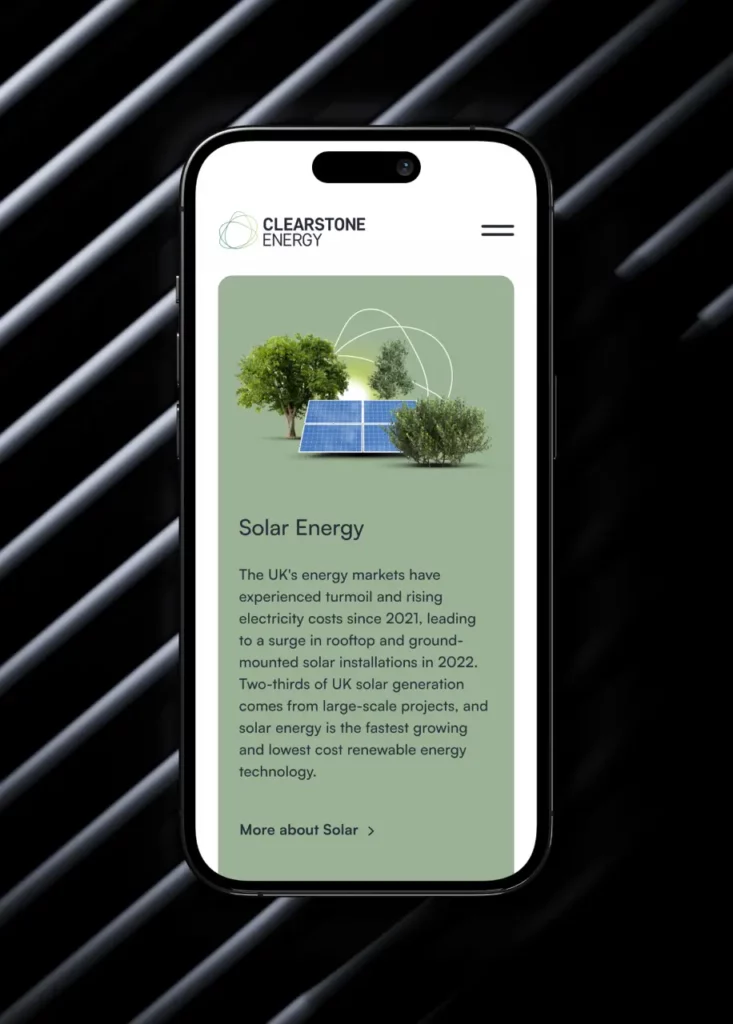Your one-stop resource for UI/UX design
Welcome to our in-depth guide on UI/UX design. This page is designed to provide you with essential insights and practical tips for creating user-friendly and visually appealing interfaces. Whether you’re new to design or looking to refine your skills, you’ll find valuable information on best practices, design principles, and real-world applications.
Our aim is to empower you to enhance your design process and deliver exceptional user experiences.
3 main types of UI design

Graphical user interface
A GUI allows users to interact with a device through graphical icons. Typically, interactions are facilitated through a mouse, trackpad, or some other point-and-click tool. Your laptop’s desktop or home screen is an example of a GUI.

Voice user interface
Words and syntax play the most crucial role in voice user interfaces. VUI uses speech recognition to understand voice commands. Notable examples of VUI include iPhone’s Siri, Google Home’s “hey google” feature, and Amazon’s Alexa.

Menu-driven interface
Menu-driven interfaces provide users with command options via a list or a menu. These commands can present themselves in full-screen or as a pop-up or drop-down. Examples of menu-driven interfaces include ATMs and digital parking meters.
UI DESIGN
Key principles of UI Design
An easy way to recall the fundamental principles of UI design is to learn the four c’s:
- Control: The users should be in control of the interface.
- Consistency: Use common elements to make your UI predictable and easy to navigate, even for novice users.
- Comfortability: Interacting with a product should be an effortless, comfortable experience.
- Cognitive load: It’s critical to be mindful of bombarding users with content. Be as clear and concise as possible.

USER EXPERIENCE
UX Design Principles
Discover a wealth of resources exploring the core principles of UX design, from enhancing usability and accessibility to understanding user behaviour and empathy. Each article is designed to offer insights, strategies, and best practices, helping you craft digital experiences that resonate deeply with users and drive successful interactions.

Performance
Delve into the crucial technical aspects of how a website functions. Our focus here extends beyond aesthetics to the core functionality that forms the backbone of user satisfaction.

UX and UI Design Insights
Frequently Asked Questions About UI/UX Design
UI (User Interface) design focuses on the visual layout, including buttons, icons, and typography. UX (User Experience) design, on the other hand, emphasizes the overall feel, ensuring that interactions are intuitive and satisfying, encompassing usability, functionality, and user satisfaction.
Good UI/UX design enhances user satisfaction by making interfaces more intuitive and accessible. It can increase user engagement, reduce bounce rates, and ultimately drive more conversions, ensuring that users have a seamless and enjoyable experience.
Key principles of UI design include consistency (uniform design elements), simplicity (easy-to-use interfaces), visual hierarchy (organized information), and feedback (responses to user actions). These principles ensure that the design is functional and aesthetically pleasing.
UX design focuses on the overall experience, involving user research, prototyping, and usability testing to ensure the product meets user needs. UI design deals with the visual aspects, ensuring the interface is attractive and responsive, focusing on layout, color schemes, and typography.
Popular tools for UI/UX design include Sketch for vector graphics and prototyping, Adobe XD for design and collaboration, Figma for interface design and real-time collaboration, and InVision for prototyping and workflow management.
Improving user experience involves conducting user research to understand needs, creating wireframes and prototypes to test ideas, performing usability testing to gather feedback, and iterating designs based on user input to enhance functionality and satisfaction.
User research is crucial in UX design as it helps designers understand user needs, behaviors, and pain points. It involves methods like interviews, surveys, and usability testing to gather insights, ensuring the design is user-centered and effective.
Examples of good UI/UX design include websites with intuitive navigation, responsive layouts that adjust to different devices, clear and compelling call-to-actions, and content that is accessible to all users, providing a seamless and enjoyable experience.
Discover our user-centred UX services
INTUITIVE, EFFECTIVE AND ENGAGING UX
Dive into our UX services and you’ll find that our approach is not just about creating seamless interfaces; it’s about forging partnerships. We pride ourselves on a culture of collaboration, transparency, and a personal touch that turns projects into success stories.
Work with us and you’ll work with a team that listens and shares your vision, guiding you through each step with clarity and commitment. Explore our user experience services, where your business’s potential can unfold into an exceptional digital presence.





